More than 20 million people in the U.S. have a substance use disorder, but fewer than 20% of those people are receiving substance abuse treatment.1.2 Individuals with a substance use disorder can be reluctant to seek help for many reasons. Often, they won’t seek treatment until their loved ones stage an intervention.
Family and friends may find it necessary to intervene if the individual is resistant to treatment or is in denial about their substance use disorder. Because they refuse to get help, family and friends must deal with the ramifications of their substance abuse. In fact, nearly half of the American population is impacted by a loved one’s alcohol or drug abuse.3 This impact, combined with the negative effects of substance abuse on the individual, often motivates loved ones to stage an intervention.
Nearby Rehab Centers with Intervention Services
-
 AdThis is an ad and Boca Recovery Center – Galloway is a paid advertiser. Paid advertisers may be listed first in search results. This ad may contain content provided by the advertiser. Rehab.com does not verify ad content or any reviews that are displayed. Learn MoreGalloway, New Jersey⸱082052Top 10 Rehab In New Jersey
AdThis is an ad and Boca Recovery Center – Galloway is a paid advertiser. Paid advertisers may be listed first in search results. This ad may contain content provided by the advertiser. Rehab.com does not verify ad content or any reviews that are displayed. Learn MoreGalloway, New Jersey⸱082052Top 10 Rehab In New Jersey -
 AdThis is an ad and Boca Recovery Center – Bloomington is a paid advertiser. Paid advertisers may be listed first in search results. This ad may contain content provided by the advertiser. Rehab.com does not verify ad content or any reviews that are displayed. Learn MoreBloomington, Indiana⸱474042Top 10 Rehab In Indiana
AdThis is an ad and Boca Recovery Center – Bloomington is a paid advertiser. Paid advertisers may be listed first in search results. This ad may contain content provided by the advertiser. Rehab.com does not verify ad content or any reviews that are displayed. Learn MoreBloomington, Indiana⸱474042Top 10 Rehab In Indiana -
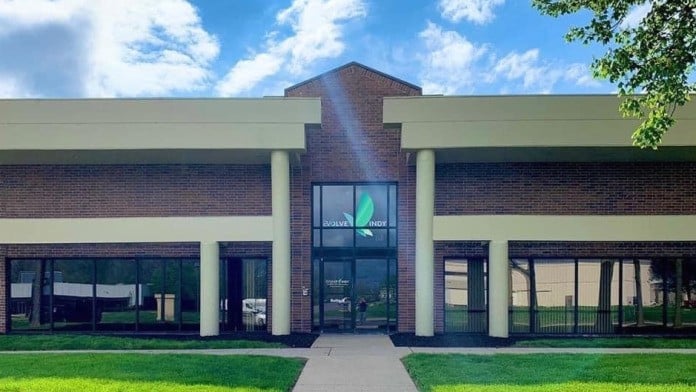 AdThis is an ad and Evolve Indy – Indiana Drug & Alcohol Rehab is a paid advertiser. Paid advertisers may be listed first in search results. This ad may contain content provided by the advertiser. Rehab.com does not verify ad content or any reviews that are displayed. Learn MoreIndianapolis, Indiana⸱462684Top 10 Rehab In Indiana
AdThis is an ad and Evolve Indy – Indiana Drug & Alcohol Rehab is a paid advertiser. Paid advertisers may be listed first in search results. This ad may contain content provided by the advertiser. Rehab.com does not verify ad content or any reviews that are displayed. Learn MoreIndianapolis, Indiana⸱462684Top 10 Rehab In Indiana -
 AdThis is an ad and Boca Recovery Center – Huntington is a paid advertiser. Paid advertisers may be listed first in search results. This ad may contain content provided by the advertiser. Rehab.com does not verify ad content or any reviews that are displayed. Learn MoreHuntington, Indiana⸱467501Top 10 Rehab In Huntington
AdThis is an ad and Boca Recovery Center – Huntington is a paid advertiser. Paid advertisers may be listed first in search results. This ad may contain content provided by the advertiser. Rehab.com does not verify ad content or any reviews that are displayed. Learn MoreHuntington, Indiana⸱467501Top 10 Rehab In Huntington -
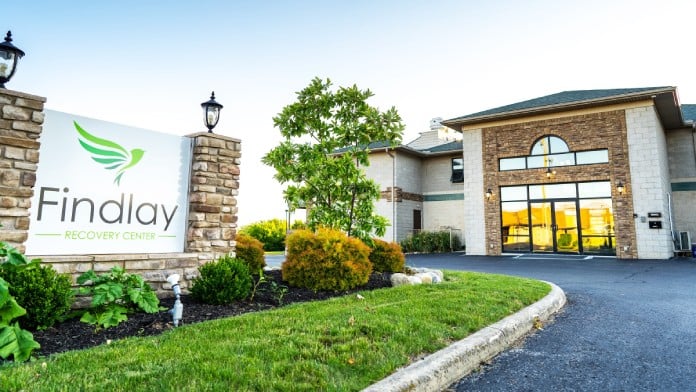 AdThis is an ad and Findlay Recovery Center is a paid advertiser. Paid advertisers may be listed first in search results. This ad may contain content provided by the advertiser. Rehab.com does not verify ad content or any reviews that are displayed. Learn MoreFindlay, Ohio⸱458401Top 10 Rehab In Findlay
AdThis is an ad and Findlay Recovery Center is a paid advertiser. Paid advertisers may be listed first in search results. This ad may contain content provided by the advertiser. Rehab.com does not verify ad content or any reviews that are displayed. Learn MoreFindlay, Ohio⸱458401Top 10 Rehab In Findlay -
 Boca Raton, Florida⸱334331Top 10 Rehab In Florida
Boca Raton, Florida⸱334331Top 10 Rehab In Florida -
 Cave Creek, Arizona⸱853311Top 10 Rehab In Arizona
Cave Creek, Arizona⸱853311Top 10 Rehab In Arizona -
 Lancaster, California⸱935351Top 10 Rehab In California
Lancaster, California⸱935351Top 10 Rehab In California
What is an Intervention?
An intervention is an organized attempt to convince someone they have a substance use issue that requires treatment.
When staging an intervention, family and friends confront a loved one about their substance abuse and its consequences. They gently but assertively share how the person’s substance use has affected those who care about them. Loved ones provide specific examples of the individual’s destructive behaviors, and each person clearly explains what they will do if the person refuses to get help.
The purpose of the intervention is to encourage the individual to get treatment. By educating them about addiction and helping them realize how their behavior is affecting their life and relationships, loved ones are hoping to break through their resistance and guide them to appropriate treatment. The intervention also offers a clear treatment plan for the individual to get the help they need.
Sometimes, family and friends plan an intervention on their own. However, professional intervention services are available to walk families through the careful step-by-step process of carrying out an intervention. Involving a trained interventionist can often increase the chances of success of the intervention.
When is it Necessary to Stage an Intervention?
You’ve probably heard the saying: “You can’t help someone who doesn’t want to be helped.” So when could an intervention be helpful?
Keep in mind that, when you stage an intervention, the goal is to stir up that desire for help. By the end of the intervention, the hope is that the individual will realize they need help and want to get treatment.
Still…you may be wondering if this is the right thing to do in your situation. It is time for an intervention? To determine if an intervention is necessary, look for the following signs that staging an intervention could be an appropriate next step.
- Your loved one denies their substance abuse behavior when confronted one-on-one.
- Your loved one denies they have a problem at all.
- Your loved one is unwilling to stop using drugs or alcohol despite multiple negative consequences.
- Your loved one is causing physical harm to themselves or others.
- It is apparent your loved one is not going to get help.
- You fear that your loved one is at risk of overdose. (There were more than 100,000 drug overdose deaths in the U.S. between April and 2020 and April 2021.3)
If you see these red flags waving, you are justifiably concerned about your loved one’s well-being. Staging an intervention may be necessary to help them overcome their addiction – and save their life.
Who is Involved in an Intervention?
An intervention should be small, with no more than six or seven people present. The group can include close family members, friends, and coworkers. Everyone involved should have a genuine relationship with the individual and a positive influence on them. If a family member or friend is also struggling with substance use issues, they should not participate in the intervention.
It is usually helpful to also involve an intervention specialist. This professional can help family members plan what they will say and facilitate the conversation during the intervention. The intervention expert can de-escalate situations and facilitate a healthier discussion between the individual and their loved ones.
These specialists can also help families handle issues they don’t know how to navigate on their own. The interventionist educates everyone involved about treatment options, addiction, and enabling behaviors. They explain how treatment works from a clinical perspective and help the individual see how rehab could be beneficial.
Ultimately, the interventionist’s goals are to act as a mediator during the intervention and as a guide for next steps based on the outcome of the effort. They can help arrange treatment if the individual agrees to get help. This contribution is often key, because uncertainty about which program to choose or what to look for in a program are common barriers that keep people from seeking treatment.
How Should You Prepare for the Intervention?
A successful intervention requires careful planning, organized set-up, and appropriate follow-up. This process should begin with a meeting of the members of the intervention group. At this gathering, you’ll discuss and plan the intervention. This involves the following steps:
- Create a plan: What time of day and where will you stage the intervention? What do you need to know about addiction and recovery before the intervention? Will you involve an interventionist? If so, meet with them.
- Write letters: Each person should write a letter (often called an impact statement) that they will read aloud during the intervention. These letters should express how the individual’s substance use has affected them.
- Offer support: Everyone who wants to be part of the intervention must be willing to help and support the individual as they go through treatment. They must also refrain from pressuring or shaming the individual into treatment.
- Establish boundaries: Each person should be clear about what they will do next if the person does not get treatment. Commit to ending any enabling behaviors or co-dependencies. Make it clear that relationships will change if they refuse treatment.
- Follow up: Be ready to follow through with help if the person agrees to treatment. An interventionist can help create a treatment plan in advance, so next steps are clear.
- Practice: Rehearse the intervention at least once. This will help you feel more comfortable during the actual intervention.
What Can You Expect During the Intervention?
As you stage an intervention, you’ll see there is a typical flow to the process (though each intervention is unique and can flow however it feels most natural). Generally speaking, however, the process will look something like this:
Members of your intervention group will ultimately meet with the loved one who is struggling with substance abuse. If an interventionist is involved, they will be introduced.
Next, each person will read their letter (impact statement). The interventionist should ask that no responses be given until each person has finished their entire letter.
It is important to start by expressing love and concern, and to be honest and specific. Members of the group should describe specific behaviors that have negatively affected them. Examples might include missed family events, impaired driving, or missed work.
Loved ones should note physical consequences as well as emotional and financial damage. Point out the negative impact continued substance use will have (or is already having) on their physical health.
Next, explain substance use treatment. Outline the individual’s options for treatment, including how it works, what to expect, and how it helps.
Lastly, share potential consequences. If they refuse to get treatment, let them know what will happen next. Ask them to respond within 48 hours by entering treatment.
The Dos and Don’ts of Responding During an Intervention
When you stage an intervention, keep in mind that this is an emotional event involving complex issues. It can be difficult to navigate. Here’s some guidance to steer your intervention in the right direction.
What to Do
- Use “I” statements. These help you avoid seeming accusatory. Examples include “I feel upset” and “I feel worried.”
- Be compassionate. While it’s important to be honest and assertive as you stage an intervention, compassion is key to success. Your loved one is hurting and needs support.
- Express concerns. In a calm and constructive manner, share your concerns about your loved one. Without anger or judgment, let them know you want them to live a healthy life free of substance abuse.
- Be ready for backlash. When confronted, your loved one may react negatively. They may get angry or defensive. They may deny that they have a problem or try to justify their behavior. They may also provide excuses for not entering treatment.
- Respond with love. Regardless of their response, continue to offer love and support. Remind them they have a treatable condition.
- Offer support. Assure them that they have your support and you’ll be there for them every step of the way.
What Not to Do
- Shame them. The emphasis should be on love, concern, and support. Don’t say or do things to blame or shame your loved one. Don’t bring up things to make them feel persecuted or alienated.
- Accept excuses. Establish boundaries and a bottom line before the intervention, then stick to them.
- Don’t label your loved one as an addict. This term can be stigmatizing.
What Happens After You Stage an Intervention?
The goal of the intervention is to encourage the person to get the treatment they need. However, the person may choose either to enter treatment or refuse to get help.
If they reject the opportunity for treatment, the members of the intervention group must carry out the consequences they outlined during the intervention. This may involve cutting off financial support or not allowing the person to live with them anymore.
If the individual decides to get treatment, they should begin within 48 hours. Treatment typically begins with detox, then your loved one will go on to an inpatient or outpatient program.
Detox
Detox is the process of ridding the individual’s body of addictive substances. It provides a safe, stable place where they are monitored and cared for by medical staff 24/7. Staff may use medications to ease withdrawal symptoms and ensure the detoxification process goes smoothly. Once the individual is stabilized, they will be ready to enter rehab, where they will address addiction issues and develop skills for recovery.
Inpatient Treatment
Residential or inpatient treatment involves living at the rehab facility and receiving 24/7 supervised care. A combination of treatment interventions is typically offered, including individual and group therapy, nutritional counseling, experiential therapies, and medication.
Outpatient Treatment
Outpatient treatment provides several hours of treatment each week, including individual and group therapy. This type of program is less restrictive than inpatient rehab, allowing participants to attend therapy from home while fulfilling personal obligations such as work and school.
Individuals may transition to an outpatient program after completing inpatient treatment, or they may begin their treatment on an outpatient basis. This will depend on the severity of their addiction and other personal circumstances.
Therapy
Regardless of the setting, treatment will feature several key components. These include three main types of therapy.
- Individual therapy: During individual therapy, patients work with the therapist to understand the reasons behind their substance use. They partner with the therapist to develop healthier behaviors that will replace negative substance-seeking behaviors.
- Group therapy: In group counseling, participants share their stories and support one another on their recovery journeys. A therapist facilitates the discussion, which focuses on developing sober social skills and substance refusal skills.
- Family therapy: This type of therapy helps participants work out conflict and challenges in their family relationships and rebuild broken connections. The aim is to create a positive support system that helps everyone involved.
Aftercare
Aftercare begins as soon as a treatment program ends. It provides continued support to prevent relapse. Aftercare may include ongoing counseling, 12-step meetings, a sober living home, or life coaching. This may last for a few weeks, months, or a year or more.
Lifelong Journey
It’s important to understand that recovery is a life-long process. Your loved one’s journey doesn’t end when their treatment program is over. They will continue to need your support as they walk their journey, one day at a time.
Addiction Centers That Offer Intervention Services
| Name / Address / Rating | Description | Treatments / Payments / Programs | Review / Contact | Images | |
|---|---|---|---|---|---|
Boca Recovery Center – HuntingtonAd This is an ad and Boca Recovery Center – Huntington is a paid advertiser. Paid advertisers may be listed first in search results. This ad may contain content provided by the advertiser. Rehab.com does not verify ad content or any reviews that are displayed. Learn More 3040 W Park Dr
Huntington, IN 46750
| Boca Recovery Center is a luxury drug treatment facility with a location in beautiful Hunting, Indiana. The company started in Florida in 2016 and quickly moved into three additional locations to address substance disorders and co-occurring mental health issues. They accept most major insurances and will check your coverage options days before you | Treatments Programs Payment Options | View Website (800) 516-4357 | This is my first time seeking sobriety. As soon as I walked through the doors, I felt calm and welcomed. The staff are easy to approach and talk to. My peers are welcoming and my new family.
Jesse Bellinger
2 weeks ago
Boca is a very good experience staff is awesome and very helpful and know what you’re going through.
kyle boyd
2 weeks ago
Boca was really life changing for me.i learned a lot more here than just about my drug addiction my mental health physical health and more the staff are so motivated to get us better the groups are magical… better than 6 flags itself food is awesome therapist nurses staff and case management r amazing i came in here a sad had nothing going 22 year old 30 days later leaving happier than ever and i learned so much knowledge wisdom from the whole family here at Boca this place is truly a blessing 😭💯🥰🥰.I recommend this place to anyone it’s amazing I could really go on forever………once u go Boca addiction will be remembered but erased from ur life….go team Boca👌🤘
Samuel Pletka
2 weeks ago
| 
24 24 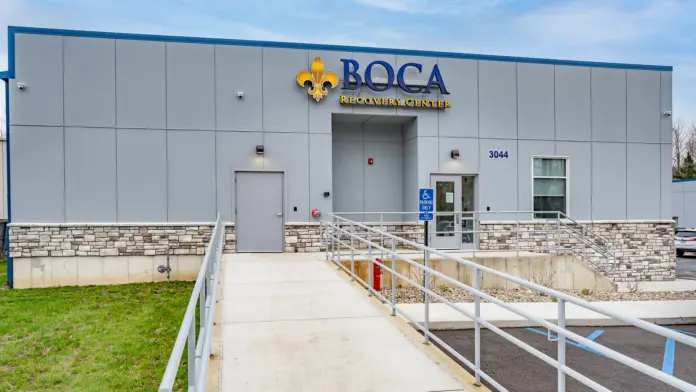



|
901 Clint Moore Rd
STE A
Boca Raton, FL 33487
| Boca Recovery Center is a comprehensive drug and alcohol treatment center in Boca Raton, Florida. Their Boca Raton location is actually their administrative office so they don’t administer treatment here directly but this is the place you call as a starting point for your recovery. They’ll help you figure out which of their programs is the best | Treatments Programs Payment Options | This place is god sent. I have been in several trauma centers in Florida and they are the only ones that seem to get it! Great snacks, fashionable donations (including shoes), and even better Techs.
Ive been clean since the holidays due to their new beginnings of sobriety excitement and impressive alumni support system +Nikki. Thanks, Boca 😀.
Beach Beauty
1 month ago
Boca is an amazing place. The staff is absolutely amazing. I was fortunate enough to be able to work with Misty and Sondra. From day 1 until the day I left was a complete 180. Misty helped set me up for my next steps, and truly cares and checked in on me to make sure it was the right fit. She got to know understood me as a person and truly knew the right next steps for me to be set up for success. Highly recommend Boca.
Aria Kamyab
7 months ago
I absolutely love this place!!! So much help and healing!!! Great staff!! 10-10 recommendations.
Nicholas Reece
1 year ago
| 
13 13 


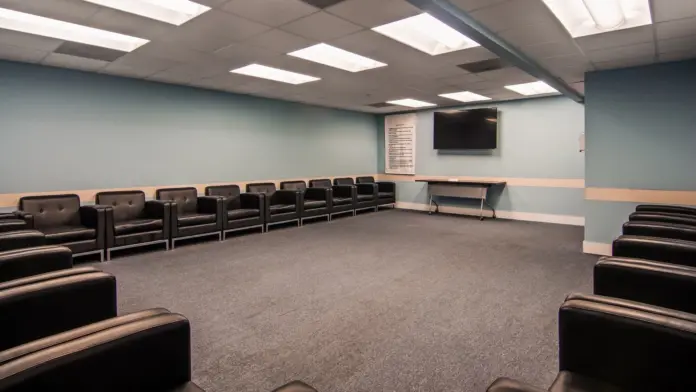
| |
3010 E Cloud Rd
Cave Creek, AZ 85331
| Soberman’s Estate, located in Cave Creek, Arizona, is an alcohol and drug rehab center that provides addiction treatment services to adult men, professionals, and public figures. They are a discrete, luxury rehab for individuals aged 30 to 80 years old. This location caps their treatment center at ten men at a time. Soberman’s Estate, located i | Treatments Programs Payment Options | Soberman’s estate saved my life and the staff was tremendously amazing. I deeply appreciate their commitment to assisting individuals battling with depression and other addictions. Thank you Brady, Trish, Janice, Jody, Allen and the entire staff.
Japhet Niyizigama
3 months ago
My partner spent 9 weeks here last fall. Having tried other inpatient and outpatient programs, I can say that Soberman’s truly helped him discover what life was worth living for. The staff and the care they provide are top-notch. I think this place truly saved his life. From a family perspective, I really appreciated how they included me and others in his family in his care. The family support calls and the ability to do family therapy sessions helped me understand his journey better, but to also understand my role in all of this. Overall, I can’t recommend Soberman’s enough; we are grateful to be a part of their community!
Jenny Martin
4 months ago
Soberman’s Estate was everything I needed for my recovery. The staff, the program, physical activity and culinary experience were top notch and essential. The program is well designed and works better than I expected. My time there and being removed from alcohol for five weeks was everything I needed to remove my craving for alcohol. Soberman has changed my life in ways I never could have imagined.
George B.
4 months ago
| 
5 5 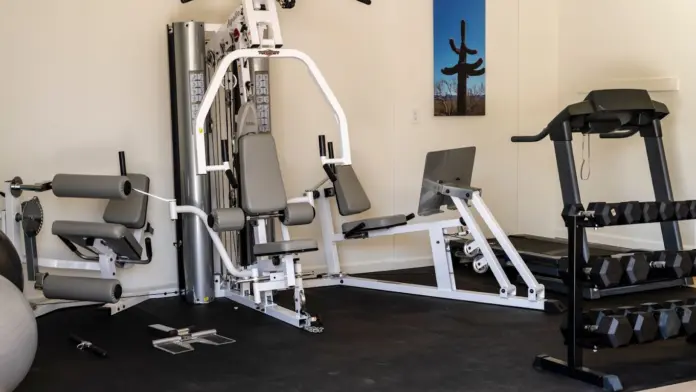



| |
1066 East Avenue J
Lancaster, CA 93535
| Design for Change is a drug rehab facility located in Lancaster, California. The center offers treatment for substance use disorder, alcohol use disorder, opioid use, chemical dependencies, and co-occurring mental and behavioral health disorders. Design for Change provides detox, medicated-assisted treatment (MAT), residential inpatient treatment, | Treatments Programs Payment Options | Five-Star ReviewChoosing this design for change treatment center was one of the best decisions I ve ever made. From the moment I walked through the doors, I felt a sense of safety, support, and genuine care that I hadn t experienced anywhere else. The facility is beautiful and peaceful, but it s the people who make this place truly special.One of the standout individuals on the team is Tiffany, one of the directors. Her compassion, professionalism, and unwavering dedication to every individual s recovery journey is something you rarely see. Tiffany doesn t just talk the talk she truly walks with you through the process. Whether it was a rough day or a breakthrough moment, she was there offering insight, encouragement, and a calming presence that made all the difference.The program is thoughtfully designed, blending evidence-based therapy with holistic practices, and the staff are all incredibly knowledgeable and supportive. You re never treated like a number here you re seen, heard, and deeply respected.If you re looking for a place that s not only committed to helping you heal but also to empowering you long after you leave, this is it. I m beyond grateful for my experience, and for people like Tiffany who pour their hearts into the work they do every single day.
salim halabi
2 months ago
Deciding to go and stay at DFC was the best thing that happened too me. The staff and counselors are world class. The education and treatment I received changed my life. Care, compassion, & understanding of my disease from the staff kept me focused on my recovery. I owe my future to this program – and it is looking bright!
Angela Simpson
3 months ago
Wonderful and knowledgeable staff. Nick and Adam are substance abuse counselors who really truly care and their experience was invaluable. This place is truly unique within the recovery community.
Bob Lawblaw
5 months ago
| 
6 6 



| |
Purposes RecoveryAd This is an ad and Purposes Recovery is a paid advertiser. Paid advertisers may be listed first in search results. This ad may contain content provided by the advertiser. Rehab.com does not verify ad content or any reviews that are displayed. Learn More 7239 Kentwood Ave
Los Angeles, CA 90045
| Nestled in the heart of Los Angeles with sweeping views and easy access to LAX, our luxury substance abuse treatment center offers an exceptional healing experience in a serene, upscale setting. We specialize in comprehensive, evidence-based care with a full continuum of services, including medical detox, residential treatment, and aftercare planni | Treatments Programs Payment Options | View Website (352) 706-8237 | Purposes Recovery has no reviews yet. Leave a review.
| 
15 15 



|
586 Glorene Ave
South Lake Tahoe, CA 96150
| Elevate Addiction Services is an inpatient detox program located in South Lake Tahoe, California with a holistic approach to treating alcohol and drug addiction. They’re part of a network of treatment centers across California. South Lake Tahoe’s idyllic backdrop with gorgeous pine trees and mountain vistas makes it an ideal retreat to prioriti | Treatments Programs Payment Options | Great staff and food
Sonday8
2 months ago
I was a client here between February and March of 2025 for the 30 day program. Far exceeded my expectations. I enjoyed it so much and the staff that I decided to do the 3 month trainee program where I m starting my career in recovery. I m very excited to join the team and have a better future for others and myself.
Nicholas Salas
2 months ago
The elevate program was very profound for me as it got to the deep root of my addiction and way I’ve relapse, I’m grateful to be able to live my life with responsibility and peace thanks to elevate.
Justin Goulbourne
3 months ago
| 
5 5 



| |
971 South Dixie Highway
Pompano Beach, FL 33060
| Boca Recovery Center in Pompano Beach, Florida is located just 10 miles north of Fort Lauderdale. We provide comprehensive rehabilitation services ranging from medical detoxification and residential treatment to specialized programs that meet your unique needs. Boca Recovery Center in Pompano Beach, Florida, is an addiction treatment facility for a | Treatments Programs Payment Options | So helpful! Especially Nikki, she’s the best!
Dana Merson
3 weeks ago
Great facility! Nikki was tha absolute best! And still is I’ve been to multiple treatment centers and Nikki is the only one who consistently checks up on me to make sure I’m ok! Would recommend any one who’s thinking about getting clean to start there journey here!
Troy Fauteux
1 month ago
When I decided to go into detox , I was ashamed and embarrassed for having gotten to the point of needing it, and intimidated by getting it. The minute I arrived at Boca Recovery Center, all of that went away. The entire staff, from Case Workers to Doctors, Nurses, Coordinators, Therapists, – everyone– was so professional, kind, friendly, caring , informative, supportive , and helpful. I was so comfortable and my condition improved everyday. It was one of my best decisions to go there and be guided by them to better health. I haven’t felt this strong and healthy in 5 years. I thank the people at Boca Recovery Center with all of my heart. Love and mercy to everyone.
Duane.
Duane Rollick
1 month ago
| 
9 9 

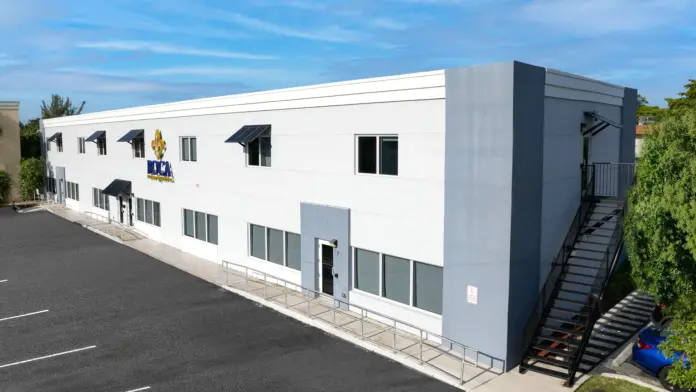

| |
1813 Harwood Court
Hurst, TX 76054
| Symetria – Hurst Outpatient Rehab and Suboxone Clinic in Hurst, Texas, is a private drug rehabilitation clinic for adults. The CARF accredited clinic offers various withdrawal medications to help clients get started with their recovery journey. You’ll also have access to treatments such as the intensive outpatient program (IOP), one on one | Treatments Programs Payment Options | I AM SO THANKFUL FOR SYMETRIA AND THE GREAT STAFF.They are very helpful with any questions or concerns you may have about the program They make you feel at easeThey don’t judge you it’s a really great and safe place to began recovery. I highly recommend symyetriaTo all staff : thanks so much. N.B
Nolan Brown
3 months ago
Symetria saved my life in more than one way. Each member of this team deeply cares about the patient without judgement. Vannah is such an incredible Clinician who truly listens, is an advocate for her patients, and is helping me work through my trauma to heal in a healthy way. I am forever grateful for this entire team: Samantha, Vannah, Dr. Son, the wonderful nurses. Thank you for saving my life and helping me heal.
Rhean Wren
8 months ago
Van is the best, and super sweet and helpful.
Allison Richards
8 months ago
| 
5 5 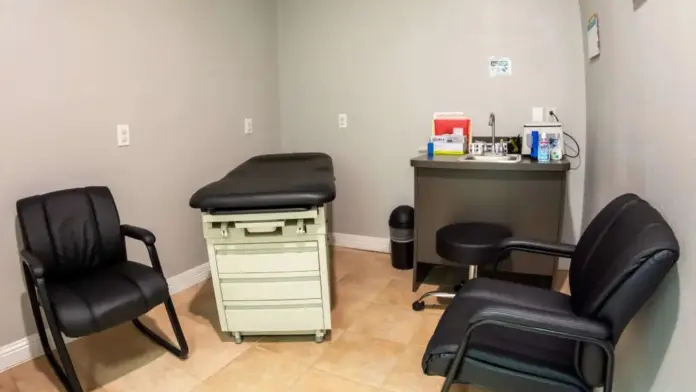
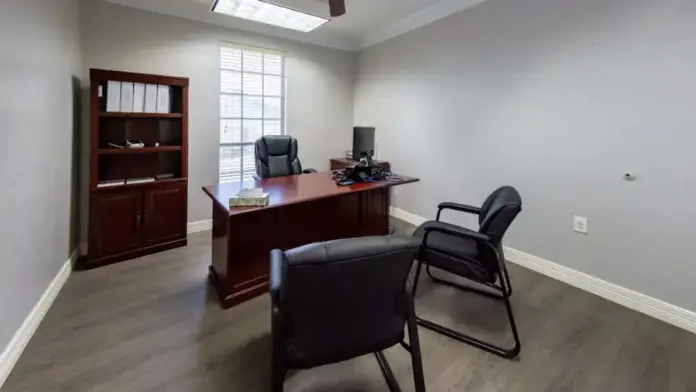


| |
Evolve Indy – Indiana Drug & Alcohol RehabAd This is an ad and Evolve Indy – Indiana Drug & Alcohol Rehab is a paid advertiser. Paid advertisers may be listed first in search results. This ad may contain content provided by the advertiser. Rehab.com does not verify ad content or any reviews that are displayed. Learn More 8770 Guion Rd
Suite B
Indianapolis, IN 46268
| Evolve Indy is an addiction treatment center in Indianapolis, Indiana. Their innovative approach to drug treatment includes a calming interior design that promotes flow, movement, and social interaction. They treat both substance use along with dual diagnoses given for co-occurring disorders. The center encourages outdoor activities with adventure- | Programs Payment Options | View Website (317) 666-8485 | Had a great experience there with everyone from the techs to the instructors
jeremy k
3 weeks ago
This place has save my life in so many ways I love all the techs. This isn’t jus a recovery center this is a family love you all at evolve indy
-Amar
Amar Stevedores
3 weeks ago
This place is a great place to go if you need help with substance abuse or just mental health as well. When I went, I unfortunately didn’t take it very seriously but the people that did take it seriously have been very successful. Kyler was a great mentor while I was there, and he along with the other techs all seem very genuine and honest and willing to help in anyway they can. I am extremely grateful for this place, as well as Kyler especially. I don’t think I would be where I am today without him as a mentor.
Andrew Mohr
3 weeks ago
| 
9 9 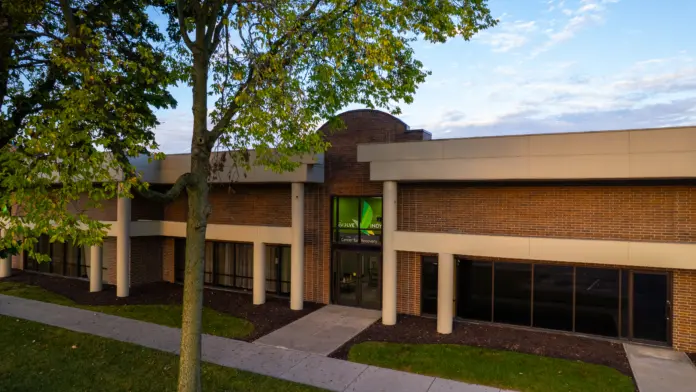



|
6505 S Paris St.
Centennial, CO 80111
| Footprints To Recovery – Colorado is a drug and alcohol rehab located in Centennial, Colorado. They provide outpatient addiction treatment. Footprints To Recovery – Colorado is a drug and alcohol rehab located in Centennial, Colorado. They provide outpatient addiction treatment. Addiction-related services provided at Footprints to Recovery incl | Treatments Programs Payment Options | Footprints was an amazing experience and helped me turn my life around and back on track! I feel like I m my old self again, before my addiction.
Cody Thibault
2 months ago
Wonderful staff and program. The groups are thought out, planned and executed successfully. You can tell the staff are all on the same page when it comes to patient care. Addiction and substance abuse are addressed with compassion and professionalism. Even more than that, the program provides a crash course in mental health which services all aspects of life.Highly recommend for anyone suffering from any level of substance abuse. The staff and the program they ve designed gave me my life back.
Mark Gillaspie
2 months ago
Very thankful for Footprints and to all the staff. I would highly recommend to anyone seeking treatment.
danny garcia
2 months ago
| 
4 



| |
1400 Veterans Highway
Levittown, PA 19056
| The Steps To Recovery addiction treatment center is situated in Levittown, Pennsylvania. At this drug rehab center, patients can expect to engage in a unique treatment approach that focuses on helping individuals recover through authenticity, intimacy, community connection, and transparency. Steps to Recovery offers a serene and private environ | Treatments Programs Payment Options | I have been to several treatment facilities and this one is by far the best one i have been to. Not only is the facility clean and well kept, the faculty that works there have amazing hearts. This is the only treatment facility that i have been to where the staff actually genuinely care for you and your recovery/well being. They have a unique treatment plan that works. Unlike many places I have been to instead of boring you to death, they actually make recovery fun, which in my experience has a lot to do with being able to succeed in recovery. I have recommended multiple friends and family members to go here when they are struggling with addiction and will continue to recommend Steps to Recovery to anyone who asks how i got clean and remained clean. I owe my life and my recovery to these people and they will always have a special place in my heart.Just a little update, celebrating 10 years clean in a few months
Keith Greisemer
4 months ago
I recently graduated from STR. I was in programming between May to September, originally PHP and then in the IOP mental health program. While in PHP I was in housing as well. There are family sessions offered too, but I did not utilize that service while at STR.While the house I was at was not perfect, administration tried their best to accommodate every concern clients had with the house. It was overall a clean and safe environment to live in. If there are any concerns advocate for yourself and ask a tech to call a house meeting if it is an interpersonal issue within the house. If you have a different issue communicate that to the director and it will most likely be handled promptly.The PHP (partial hospitalization program) for mental health is six days a week, 9am-1:30 Monday-Friday and 9am-12pm Saturdays. The program changes as needs change. When I first began there process groups were three hours long, but when I left they were two hours long with an additional hour of psych ed. While the day may seem long, everyone gets a break between noon and 12:30. Afternoon there are different types of therapy everyday like art therapy, DBT, CBT.IOP (intensive outpatient program) is only 9am-12pm three days a week, usually Monday, Tuesday, and Thursday. The director is accommodating though so if for any reason you need to not go on a Monday, you could always go on a Saturday if you advocate for yourself.You ll have one individual session a week with one of the clinicians. I had Ashley and she is phenomenal. While the staff really do care about the clients, Ashley definitely cares about clients and it shows in her work.You ll also have a session with either Dr. Newman or Monique once a week to go over medications they are both amazing!STR is shaped not just by the staff, but clientele too. I have reinforced and grew my support system while being at STR. And while I was in the mental health program, I have substance use disorder as well, I d recommend Steps to recovery struggling with their mental health or substance use. It may take a couple of weeks to really settle into the program, but continue to do the work since you are worth it and advocate for yourself if something isn t working for you.STR is also a great facility if you re part of the LGBTQ+ community. The staff here are not just accepting, but affirming. There is an optional LGBTQ+ group once a week with Christian, which was my favorite part of the week.
Sal DiPasquale
9 months ago
The staff were all very nice for the most part. I had some great moments. STR helped me out while I was in a rough position and for that I am grateful. I appreciate that they go out of there way to help people with extenuating circumstances. There are a lot of personalities and that can frustrating. However, I would recommend this place to a friend in need. Overall, it s a good place.
Hayden Cole
9 months ago
| 
6 6 



| |
4461 Medical Center Way A
West Palm Beach, FL 33407
| All In Solutions Wellness Center is a treatment facility located in West Palm Beach, Florida. This facility specializes in treating adults who are struggling with co-occurring disorders and addiction. The levels of care offered here are detox, residential, and aftercare programs. All In Solutions Wellness Center is a treatment facility located in | Programs Payment Options | This place is very helpful, the staff are amazing, I didn t think it would be this nice, but it s a huge relief to know that everyone here really cares and genuinely wants to help even tho they didn t know who I was, I can tell everyone here really wants me to be sober and they really give you the tools to be sober
Oh Elio
3 months ago
This center is excellent! The staff truly cares about to healing of each individual that walks through the door.
Lexi Dykes
3 months ago
If you have a problem with drugs, or alcohol and truly want to stop, this is the place for you. Every employee here has been through the same thing and it they know where you are. They are compassionate and give you time to find yourself. They are eager to answer questions and will help you find yourself and back on the right track!
Kelly Collins
3 months ago
| 
5 5 
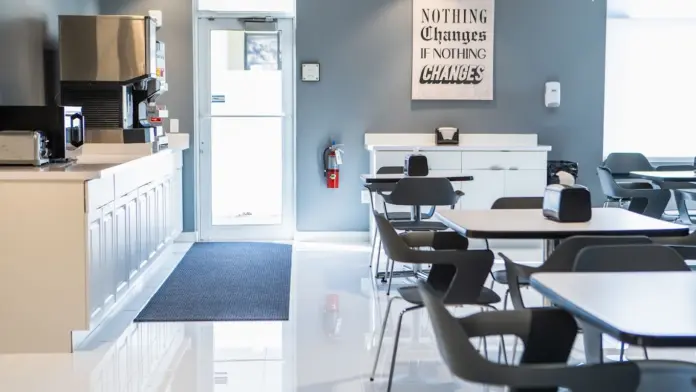


| |
Boca Recovery Center – BloomingtonAd This is an ad and Boca Recovery Center – Bloomington is a paid advertiser. Paid advertisers may be listed first in search results. This ad may contain content provided by the advertiser. Rehab.com does not verify ad content or any reviews that are displayed. Learn More 2306 W 3rd St
Bloomington, IN 47404
| The Boca Recovery Center is a luxury alcohol and drug rehab center for adults in Bloomington, Indiana. They specialize in cutting edge addiction treatment provided in a residential setting. The Boca Recovery Center is a luxury alcohol and drug rehab center for adults in Bloomington, Indiana. They specialize in cutting edge addiction treatment provi | Treatments Programs Payment Options | View Website (930) 200-3145 | Boca Recovery was my saving grace. I was given the ultimatum that if couldn’t get clean from alcohol and marijuana, then I would be removed from my children’s lives and have no chance of getting custody back. As an addict I just didn’t see me able to do this alone. I Google searched top rehabs in Oklahoma, and came across Boca Recovery. When I spoke to a recruiter they informed me that the facility was not in Oklahoma, but he told me not to panic. If I was ready, then all I had to worry about was making sure I was going to board on my scheduled flight. It seemed too good to be true, but sure enough they delivered and made sure I made it there safely. As soon as I stepped foot into the facility the staff treated me with the best care. Not only that, but the facility was very well maintained. You’re seen by a nurse the first day, and they set you up with everything you’ll need for the detox process. All therapist and case managers work together to build the best treatment plan that suits the patient/client. Not to mention the food they provide is amazing! Thanks to Boca recovery I have passed every UA since I’ve been out, and am able to be involved in my children’s lives again. Before arriving to Boca I didn’t see any of this being possible. Highly recommend to anyone struggling with addiction!
Mayra Vasquez
3 weeks ago
BOCA saved my life. It offered me safety, stability, and daily expectations that I needed desperately. From the first day of entering the program the techs were welcoming, understanding, and supportive which eased my anxiety and allowed me to relax. The clinical staff I worked with is amazing and they helped me begin to understand why I needed to be there and pushed me to see that I also deserved happiness and peace of mind. The community that was created during my stay is one that is with me for life. Lifelong friendships have been created and we stay in touch to this day which has been critical for my sense of belonging. Thank you to BOCA in the city of Bloomington, Indiana; you are the starting point to my path of recovery.
81 days and counting.
Aimee
3 weeks ago
Very understanding and helpful staff. Actually care about you and your recovery. Highly recommend.
Steve T-Videos
1 month ago
| 
7 7 



|
7941 West Rifleman Street
Boise ID, 83704
| Ashwood Recovery – Outpatient is part of Northpoint Recovery, a company dedicated to helping people break free from addiction. Since their inception, they’ve opened several rehab locations across the Pacific Northwest. This outpatient addiction center is located in Boise, Idaho. They also offer treatment at this location for individuals with a | Treatments Programs Payment Options | Love the yoga, great classes
Lori Nelson
2 months ago
I have only done 2 IOP sessions so far. They are very informative. They are giving me the additional tools needed to recover. The facility and staff are awesome! Nothing but good to say about Ashwood.
Reed Conrad
3 months ago
Ashwood was such a great transition after rehab. The counselors are awesome and care about each client that comes in. The family counseling and groups they offer are extremely helpful for loved ones to learn about how to support addicts!Thanks guys, it had been such a pleasure being apart of AshwoodUpdate: 5 years strong and their team is still as supportive as they were at the beginning.
Skylee Sparks
3 months ago
| 
6 6 
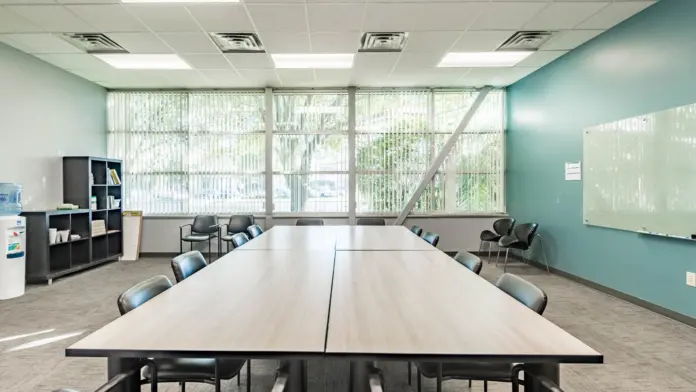


| |
17330 Newhope Street
Unit A
Fountain Valley, CA 92708
| California Prime Recovery Drug & Alcohol Rehab Orange County in Fountain Valley, California, has earned The Joint Commission Gold Seal of Approval for Behavioral Health Care. They provide a wide range of treatment for substance use disorders, addiction, and co-occurring mental health conditions. The outpatient treatment program includes three level | Treatments Programs Payment Options | Cpr has been a safe place with empathy they are attached to great sober livings .
They were always congruent. They have great outings Nate dog the surf class was awesome. The food was hit or miss but maybe they have figured out. Overall I would recommend this program. Plus its orange county the sobriety capital of the world.
Clint Johnson
4 weeks ago
California Prime Recovery is truly a top-notch facility that goes above and beyond in supporting their clients. The houses are always clean, well-maintained, and provide a comfortable and safe environment for recovery. The staff is exceptional—House Managers Shanon, Kurt, and Jeremy are caring, dependable, and always there when you need them.
Program Director Wilson leads with compassion and dedication, making sure every client gets the individualized attention they need. Case Manager Dani is incredibly supportive and attentive, helping clients navigate their recovery journey with empathy and professionalism.
The techs and group facilitators also play a huge role in making the program effective. Their knowledge, consistency, and encouragement create a strong foundation for personal growth and lasting sobriety. I’m truly grateful for the entire team at California Prime Recovery—they make recovery possible and sustainable. Highly recommend!
Robin BlackCloud
1 month ago
I’ve been here and it changed my life, from peer support to staff support, and programs w/ benefactors that help to support and assist with issues regarding substance or mental health. California Prime will forever be a highlight of my life. I have many friends from there that create a lasting bond of a lifetime. I love each and every counselor, staff member, and client that I have met or worked with. I love California Prime and if you are in recovery, or seeking sobriety help, this IS thee place for you!
Jeffrey Ambat
1 month ago
| 
3 

| |
2301 W Sample Rd
Bldg 4, Suite 2b
Pompano Beach, FL 33073
| The Luminous Care is a luxury drug and alcohol abuse rehab center for adults in Pompano Beach, Florida. This center offers detoxification, inpatient, outpatient, and aftercare. They also offer medication assisted treatment to help you be more successful. They use a holistic approach to recovery and believe that you must find the root cause of your | Programs Payment Options | Thanks to Luminous and the caring staff, I was able to get down to the core issues I went through in my adolescence, now I have the confidence and tools to begin a productive life.
They offer personalized treatment plan. That makes a huge difference.
Thomas Moody
1 month ago
I was at a place in Indiana that i thought was the best until I came to luminous. The support system and help they have n give there exceeds all expectations! I originally was going to a different program but couldn’t wait for a bed n luminous took me the same day I called! By the grace of god I found this place because it’s had a huge impact on my recovery. Getting sober is the easy part n recovery the real battle is STAYING sober n if u need help with the tools to doing so I suggest you call luminous. Scott (coach) runs amazing groups you can actually take from, Sean is a great therapists and doesn’t miss a beat and Ed runs a great program. I’m not a bot and wasn’t paid to leave this review lol I’m a resident who is just truly greatful to have had a chance to be in this program. Thank you guys at luminous I have a long journey ahead of me and I appreciate yal more than you know!! Wish I could explain more but trust me, from one addict to another you choose wat you get from a program and Theres a lot to take from this place. Thanks
MurcI MurcI
2 months ago
I think that luminous was great fit for me and would recommend it
Steve Dobson
3 months ago
| 
5 5 


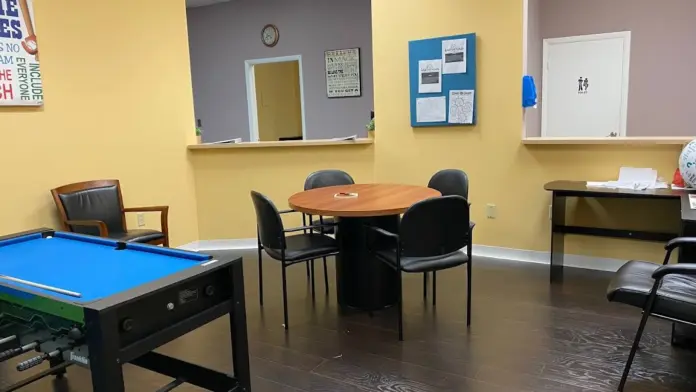
| |
Findlay Recovery CenterAd This is an ad and Findlay Recovery Center is a paid advertiser. Paid advertisers may be listed first in search results. This ad may contain content provided by the advertiser. Rehab.com does not verify ad content or any reviews that are displayed. Learn More 1800 Manor Hill Rd
Findlay, OH 45840
| They offer supervised medical treatment to safely manage withdrawal symptoms during detoxification, residential care providing long term support for addiction recovery, as well as flexible outpatient addiction therapy allowing patients to live at home while receiving regular treatment. Additional levels of care offered include intensive outpatient, | Programs Payment Options | View Website (419) 374-9710 | FRC was a place that they care about you and your not just a number they care about your health along with your mental wellbeing I can’t say enough on the staff they help you out best they can I would recommend this place to anyone that needs to get clean
Jim Fanson
3 weeks ago
Had a great experience there with everyone from the techs to the instructors even a great nursing staff
jeremy k
3 weeks ago
Frc is a really good facility, it was very beneficial for me, it’s a really good program. Some of the best advice I got was from the people I met here. Corey one of the techs here was very helpful and supportive while listening to me and helped me get through my time here.
Kevin telakowicz
4 weeks ago
| 
5 5 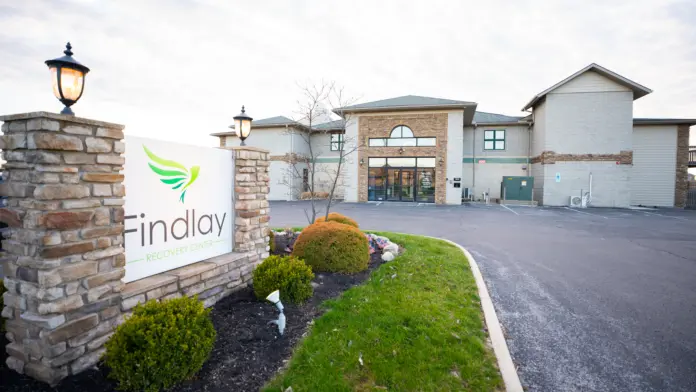


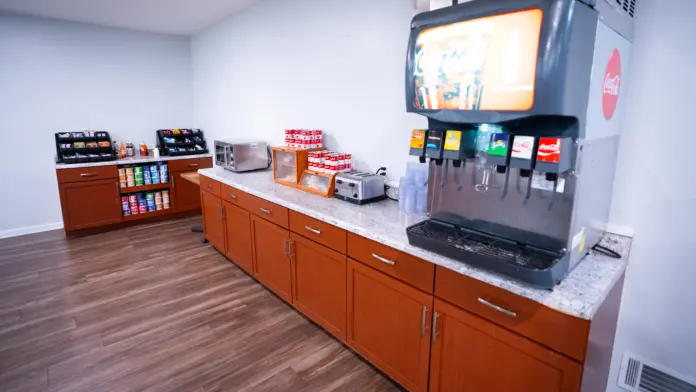
|
85 SW 5th Avenue
Delray Beach, FL 33444
| Recovery Boot Camp is a substance use disorder treatment facility for men in the Delray Beach, Florida area. They are a residential facility that helps educate you about making better choices and the bad consequences that substance abuse causes. Recovery Boot Camp is a substance use disorder treatment facility for men in the Delray Beach, Florida a | Treatments Programs Payment Options | Tried to get sober every which way. Came to recovery boot camp and was shown a real answer to my addiction. Love this place. Saved my life
6 years ago
Great staff who genuinely care laid back atmosphere I feel as if I gained sufficient knowledge of the aa program and doing the steps without any of the bs that comes with other treatment centers
6 years ago
This was a great place to learn how to grow up. As an alcoholic, I avoided adulthood and had a ready made excuse as to why I didn’t achieve or succeed in things. “I’m a drunk.” Once I removed the bottle, I quickly saw how much maturing I needed to do in everyday, regular life. The guys at RBC get you moving towards adulthood.
There are simple rules to be kept and standards to live up to; youre required to work the 12 steps, get a job, and respect the grounds and the people that live and work there. They are simple rules that many of us come in not knowing how to follow or have bucked at all points in our active addictions. Slowly but surely, this place guides you away from old habits into new, more productive ones.
All in all, this place takes you from beaten and broken to strong and empowered if you follow the rules and suggestions laid right at your feet. I’d recommend RBC to anyone serious about changing their life and “becoming the man they were meant to be.”
6 years ago
| 
6 6 



| |
314 Grove Neck Road
Earleville MD, 21919
| Bracebridge Hall is an inpatient facility located in Earleville, Maryland under the umbrella of Recovery Centers of America. It’s on 560 acres with a view of the Sassafras River. They offer substance use disorder (SUD) treatment and mental health treatment for co-occurring disorders. They accept and are in network with most major insurance plans | Treatments Programs Payment Options | Bracebridge Hall saved my life & marriage. The staff there is AMAZING. Dan, Nikki, Chris, Al & all the others & the RSS staff. Good food and lots of it lol. The fellow patients were awesome as well. Such a positive experience. BEST investment I EVER made. 10 stars I actually miss the place thank you all
Tim silveria
2 months ago
I attended RCA for 34 days at Bracebridge Hall. It was the most awesome place for a rehab. I learnt about myself and my addiction. I attended rehab there November 15th – December 17th. The staff in it’s entirety, from counselling to doctors, counseling to dietary. There was not one thing they didn’t cover in my treatment. The place was the most beautiful place and the treatment was the best treatment out of anyone I have heard. From all the ladies and guys in nursing through the ladies and guys in the kitchen. I will never forget that place or what I learned there. I will always appreciate them for all they did for me. As well, my insurance did not cover my stay. I went through their program on scholarship. I could not thank them enough for what they did for me!!!
Timothy Holtschneider
4 months ago
My experience at RCA bracebridge Hall is one that absolutely saved my life. It started with a nursing staff. My counselor was absolutely amazing and her name was Tammy. I honestly believe that she wasn’t my counselor, I would not be where I am today. I have to mention Chris grape, Lauren and Tom. Without these people my journey would have probably ended short..Beth was my case manager,she was absolutely the best at what she does.Mary who did Mat class is phenomenal.She was my inspiration in the area .she is amazing,she never missed an appointment, which is crazy knowing her workload.Elijah…WOW! I HAVE NO CLUE HOW SHE DOES WHAT SHE DOES.absolutely amazing.She is so calm,and always had/has the right answers at the right time that I need them. I am currently at sober living and the house manager, which name is Evan, deserves a Nobel Peace prize…no really. He has the patience of a god. I don’t know how he stays so calm in the situations that he’s put through. Even on vacation he still made sure the house was being ran up to par. If I missed anybody I’m so sorry everyone I dealt with it RCA was amazing I don’t have anything bad to say about anyone. Nothing but love for RCA and I would recommend this place to anyone who has addiction issues or mental health issues.all love. Oh and Miss Holly is absolutely amazing also she is the best for the kitchen staff. Laura at PHP has a way about her that only she can get away with and she is all love to everyone. She cares so much about her job and is very passionate. If I can think of anything else I’ll be back.lol.Also wanted to give a shout out to Sam,and Lindsay whom which are part of the nursing staff.They both went above and beyond anything I could have imagined.they genuinely care for every client that walk through RCA.I will continue to add to this post as I have more time to reflect.
Tim Smith
5 months ago
| 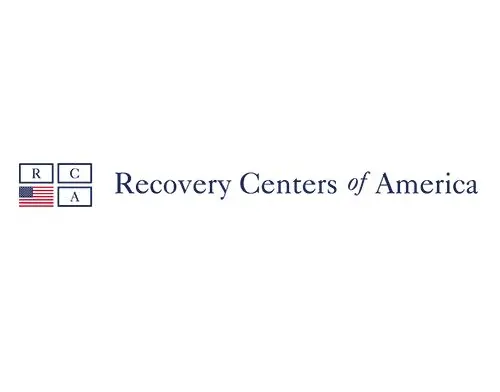
5 5 



| |
262 Gaffey Rd
Watsonville, CA 95076
| Located in Watsonville, California, Elevate Addiction Services provides alcohol and drug rehab services to men and women suffering from addiction. Their levels of care include detox, inpatient treatment, and outpatient treatment. Located in Watsonville, California, Elevate Addiction Services provides alcohol and drug rehab services to men and women | Treatments Programs Payment Options | Great program! Awesome staff, I would recommend Elevate to anyone looking for an alternative to the 12 step approach to recovery.
Kyle Emmert
2 months ago
Where do I begin Before I came to Elevate I thought I had reached rock bottom in life but shortly after coming here I realized they saved me from ever getting there. I came for an alcohol addiction which became a secondary objective to my stay. I learned to love myself and gained confidence in being me. I found a way to finally be happy in life, in the current moment without contingencies. To know I was never broken and that I have more control over my perspective than I ever thought was possible. My sobriety came as a byproduct of discovering my own self worth and I often lay awake at night filled with gratitude for having the opportunity to go through this program. The amount of understanding and support offered to me was outstanding and I felt as if I was amongst family. The care and love from the staff inspires the clients to care for each other in the same fashion. If at any point you need a shoulder to lean on or just someone to listen, every face you see is there for you. I can t find the words to formulate a sentence that will truly express my thanks and love for Elevate. All I can do is let others know if your suffering and need the help, this is where you will find it.
Nicholas Fitak
2 months ago
I am so grateful for the founders and all the staff at Elevate. From the very first introduction to the incredible program they have to offer throughout the entire time my loved one spent there, we were kept informed and encouraged. The setting is lovely, the commitment to helping each person succeed and get thru the hard things and the amazing food they serve as a part of the healing process. I really can’t say enough good things about this program, staff and facility. Thank you from the bottom of my heart and may God bless all of you and keep you going strong for many others to reclaim the lives they were meant to live!
Rebecca Kelly
3 months ago
| 
5 5 



| |
Boca Recovery Center – GallowayAd This is an ad and Boca Recovery Center – Galloway is a paid advertiser. Paid advertisers may be listed first in search results. This ad may contain content provided by the advertiser. Rehab.com does not verify ad content or any reviews that are displayed. Learn More 30 W Jimmie Leeds Rd
Galloway, NJ 08205
| Boca Recovery Center – Galloway is a drug and alcohol rehab in Galloway, NJ. They provide inpatient addiction treatment and medical detox. Boca Recovery Center – Galloway is a drug and alcohol rehab in Galloway, NJ. They provide inpatient addiction treatment and medical detox. Boca Recovery Center in Galloway, New Jersey is a luxury recovery | Treatments Programs Payment Options | View Website (609) 402-9464 | This is by far the best rehab center in New Jersey! All the staff are wonderful and very helpful! I strongly recommend using BOCA for your recovery!
Nicholas Biddinger
1 month ago
This is the top drug and alcohol detox I have experienced. Staff is very helpful and patient. I highly recommend this place to anyone struggling.
Gavin Blueberry
1 month ago
The best detox in New Jersey. Ms. Mykeala, Ms. Bre, all the Techs were the best. Second to none!!
Gerald Patterson
2 months ago
| 
7 7 
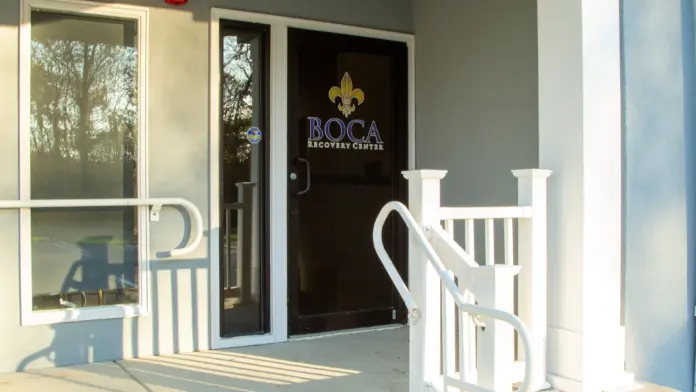
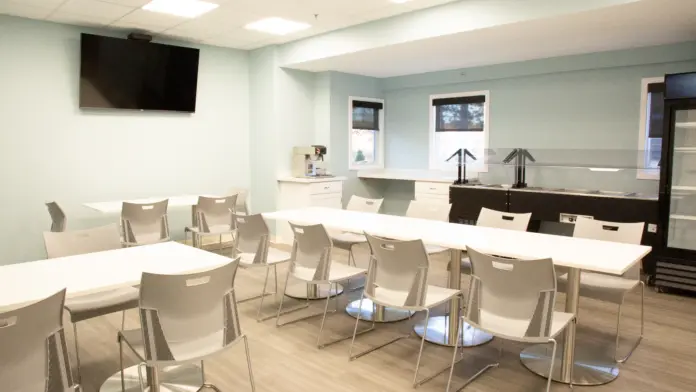

|
50 Industrial Park Way
Lake Ariel, PA 18436
| Clients seeking treatment for alcohol addiction may be required to undergo detox first. The detox process ensures any abused substances are out of a client’s system and that they are in a healthy frame of mind when they enter residential treatment. Detox is overseen and closely monitored by medical staff. The residential program takes clients | Treatments Programs Payment Options | Excellent rehab facility with great accommodations and food. Almost all of the staff have been through successful recovery so I felt at home the whole time! I’m looking forward to coming back ro speak as I continue in my 12 step recovery!
William Carlson
2 months ago
As someone in a grey area, i had more clear thoughts than people i was in with. Many things I heard from people who still needed to allow their brain to heal is “they just want our money” yet they are one of the few places that actually help people who can’t afford the treatment. And their staff is empathetic and know what you are going through. Trust them they are good people and their system works.I was reluctant at first over the 12 steps. I’m not an addict, i have substance abuse occasionally throughout my life but I’m not disordered that way. But my mental health has been unmanageable so I sought treatment. But im in a gray area stuck in PA due to insurance.Theres not many places for that kind of treatment. Still they again went above and beyond to help.I had to stay more days than I wanted for the result i needed. I had to let them do their jobs, and I did even though I thought I knew the result, which was I’m my opinion ‘hopeless’But the last day I gave them, they found somewhere. And ironically even though I found a place specifically for mental health, I still have to take those 12 steps for the housing. Not for the program if signed up for. For the housing since the program has third party housing where its required.Thats when I realized what they kept saying was true. ‘we wish people who weren’t addicts took those steps’ Everyone can benefit from them, even if that higher powers a door knob. Its is blessed by God to help the sick and suffering. Theyre beautiful steps. Which i realized in there, but i didn’t think theyd applied to me.I had thought I already took them. I know my resentments and I know where I’m at fault. I have a higher power and I know I’m powerless, but in all reality I never took those first 3 steps properly. And my resentments and faults go deeper than the cycle of anxiety allows me to see.I needed that introduction to it to see that. Immediately coming back to triggers I realized so much due to the information i was given within those walls. Again these are blessed people. You might wanna run when you get in, you might not understand the process, but trust me, and trust the process.You will be baffled by the results if you just do what they say and take those 12 steps. There you should master the first 3, and you’ll be introduced to the rest to properly pick out a good sponsor when you get to the next place. You need someone who will throughly go over the rest with you and they train you to seek that if you listen.Do it so you can be baffled by the results and live a good life.
Devyn Bopps
2 months ago
My stay at Avenues was such a pleasure. All my needs were meet. The staff are excellent! I would definitely recommend this facility to anyone seeking help from addiction.
Brian Schantzen
2 months ago
| 
5 5 



| |
3849 Chatwin Ave
Long Beach, CA 90808
| Gratitude Lodge is a drug rehab facility in Long Beach, California. The center offers treatment for substance use disorder, alcohol use disorder, opioid use disorder, and co-occurring mental and behavioral health disorders. Gratitude Lodge provides medication-assisted treatment (MAT), detox, inpatient treatment, intensive outpatient programs (IOPs) | Programs Payment Options | The review of this place lies within in its name! I am very grateful for this facility. The staff are friendly, professional, and efficient. They are very attentive and helpful to your needs. In addition, the environment is clean, orderly, and safe. I would definitely recommend this place to anyone. Thank you for all that you do to make this place wonderful experience!
Danielle Magpantay
1 month ago
I had such a great experience in such a hard time in my life. The staff was so supportive, friendly, and welcoming they knew exactly what I was going through and were so supportive. I would highly recommend Gratitude lodge to anyone who is struggling with substance abuse.
brandon fuentes
1 month ago
My name is Nik Everett, I had an amazing experience here, outstanding staff they are very open to suggestions. I learned a lot from this place and would highly suggest you go here, thank you Gratitude Lodge seriously!
we hit
4 months ago
| 
5 5 



| |
620 N State Rte 31
Crystal Lake, IL 60012
| Located in Crystal Lake, Illinois, the Northern Illinois Recovery Center offers addiction treatment to teens and adults who are suffering from drug and alcohol addictions. They also offer dual diagnosis services which means that they treat mental health in addition to addiction. They specialize in a complete spectrum of care that includes detox ser | Treatments Programs Payment Options | My time at nirc was nothing but amazing. I am currently 3 years clean and living a life I never thought I would be living. The staff at nirc are the most amazing, loving, caring, and supportive people in the world. They opened my eyes to help me believe in a life past addiction and I’ll forever be grateful❤️ if you are struggling and considering help I highly recommend nirc they will be there to help you every step of the way and show you that you are not alone in the very dark lonely life of addiction.
Grace Darush
2 weeks ago
Great program run by great people
Ethan Eiss
4 weeks ago
This was a phenomenal experience. The staff and medical team really do care about your recovery. If you’re wanting help becoming sober this is the place to go.
James Pond
1 month ago
| 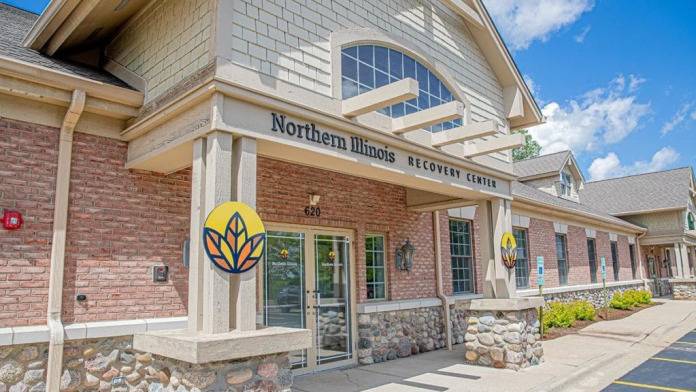
6 6 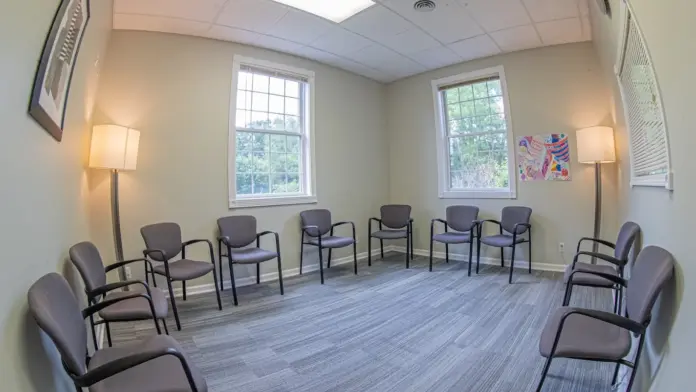

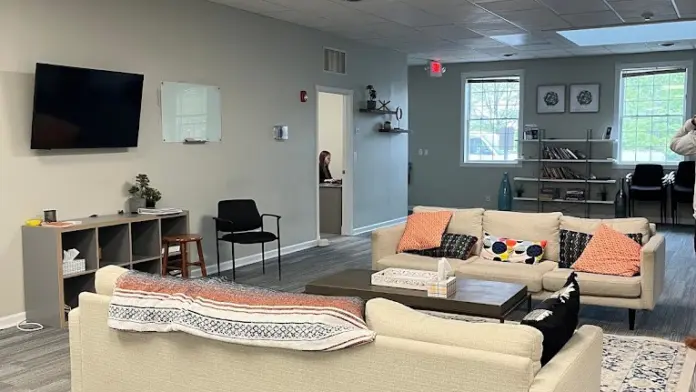

| |
1013 Delesandri Lane
Kemah, TX 77565
| Kemah Palms Recovery is located in Kemah, Texas. This center has detox and inpatient treatment for people with alcohol and/or substance addiction. Their programs also have intensive outpatient programs and tracks for first responders, Native Americans, professionals, and veterans. Kemah Palms Recovery is located in Kemah, Texas. This center has det | Treatments Programs Payment Options | This placed saved my life the staff are amazing I learned so much while I was in there Paul the director was always so nice to talk to and was always open to talk I can see that he just does not do this for the money he cares and is an amazing man thank you Kemah palms and thank you Paul
Matthew Styskel
2 months ago
Love this place saved my life help me get in tune with myself discover who I am and find new meaning in my life the director their Paul is just such a passionate guy very caring and really has a deep understanding and commitment to recovery also their affordable sober living right across the street has allowed me to participate in their alumni program outside of treatment highly recommend to people struggling with a substance use disorder
Grant Anderson
2 months ago
Kemah Palms Recovery has saved my life! All of the staff was amazing! I d like to give a special shout out to Paul. He put his sweat and tears into this recovery program. Going as far as providing sober living, alumni meetings twice a week, a specialty class at 3 every Monday-Friday, PHP, IOP, the list goes on! I can never thank yall enough for giving me the tools to turn my life around.
William Dillon Reid
2 months ago
| 
6 6 



|

Resources
- Quality, S. C. for B. H. S. and. (n.d.). Key substance use and mental health indicators in the United States: Results from the 2020 national survey on drug use and health. Retrieved August 1, 2023, from https://www.samhsa.gov/data/sites/default/files/reports/rpt35325/NSDUHFFRPDFWHTMLFiles2020/2020NSDUHFFR1PDFW102121.pdf
- Addiction – Healthy people 2030. (n.d.). Health.Gov. Retrieved August 1, 2023, from https://health.gov/healthypeople/objectives-and-data/browse-objectives/addiction
- Drug overdose deaths in the U.S. top 100,000 annually. (2021, November 17). https://www.cdc.gov/nchs/pressroom/nchs_press_releases/2021/20211117.htm





